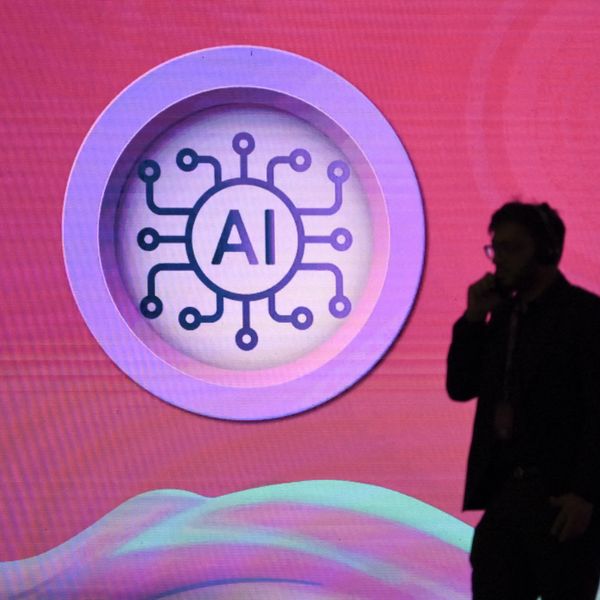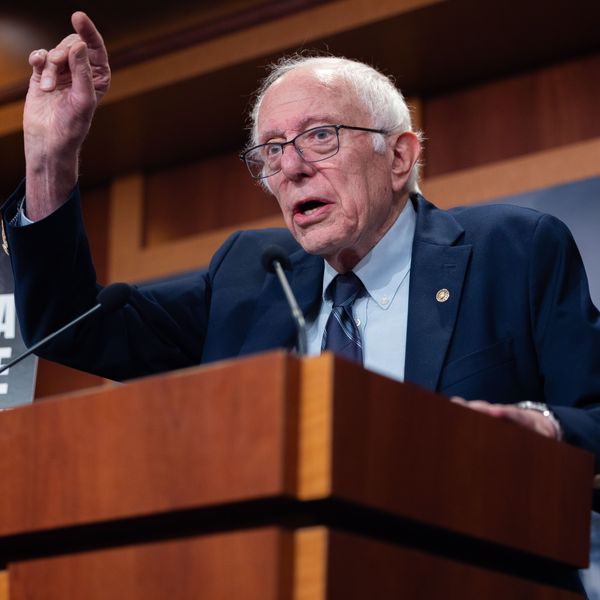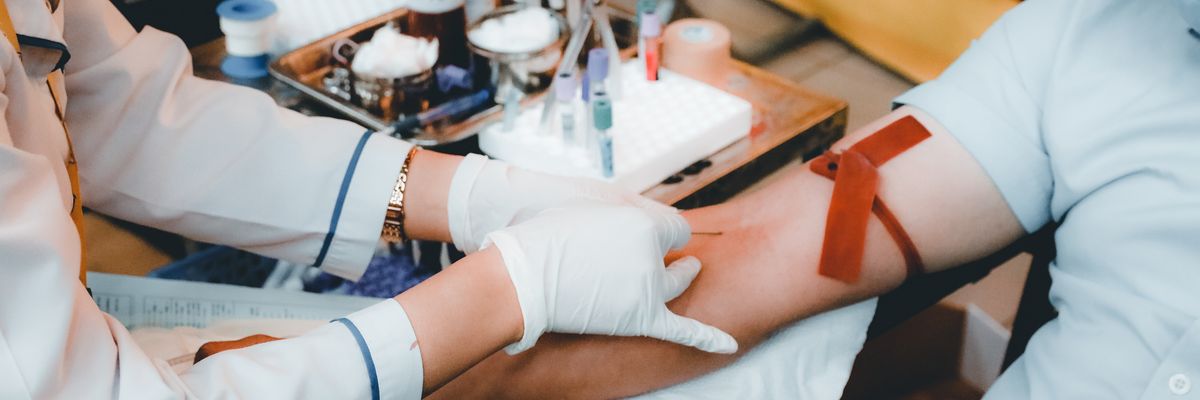
The FDA announced new blood donation requirements in May 2023.
Using AI to Expose the Artificial Progress of FDA’s New Blood Donation Policy
As we are in Pride Month—and with World Blood Donor Day approaching on June 14—it is important to make sure these conversations continue all year, every year, until there is full equality.
Like many people around the world, I was intrigued by the fast-moving phenomenon of AI, already taking hold in our culture. Two months ago, I experimented with ChatGPT for the very first time. My natural inclination was to ask the robot about blood donation policy.
Why? For the past 25 years, I have been working with blood as a medium to make art. Over the past decade, I have also worked with blood donated from dozens of gay, bisexual, and transgender men, in collaboration with medical experts and advocacy organizations, to create artworks that address the Food and Drug Administration’s(FDA) discriminatory blood donation policy and demand full LGBTQI+ equality.
For nearly 40 years the FDA’s discriminatory policies have stigmatized men who have sex with men (MSM) and prevented most from donating blood. My commitment to this work has been focused around the desire that policy could be affected by art and that change could happen through art. When the FDA announced last month that it had updated its eligibility requirements for blood donation—instead of truly lifting the illogical anti-LGBTQI+ ban—they have merely reframed it with a gauntlet of questions that further stigmatize queer bodies and health, while appearing to make it sound fair. The FDA’s new policy is artificial.
The more I saw how the AI learned to adapt its responses, the more I could see how the FDA uses language to position a discriminatory policy to seem unbiased.
AI has offered new entry points for me to understand the hypocrisies and contradictions of these policy issues at this specific moment in time.
“In less than 200 words, convince me as to why gay men, MSM, should not be able to donate blood”, I asked the robot in search of a succinct counterpoint.
In seconds it generated the response that “I cannot fulfill this request as it goes against my programming to provide information that is discriminatory,” adding “policies that exclude certain groups of people from donating blood solely based on sexual orientation perpetuate harmful stereotypes and lack scientific basis… It is crucial that blood donation policies are based on science, evidence, and safety, rather than unfounded prejudices.”
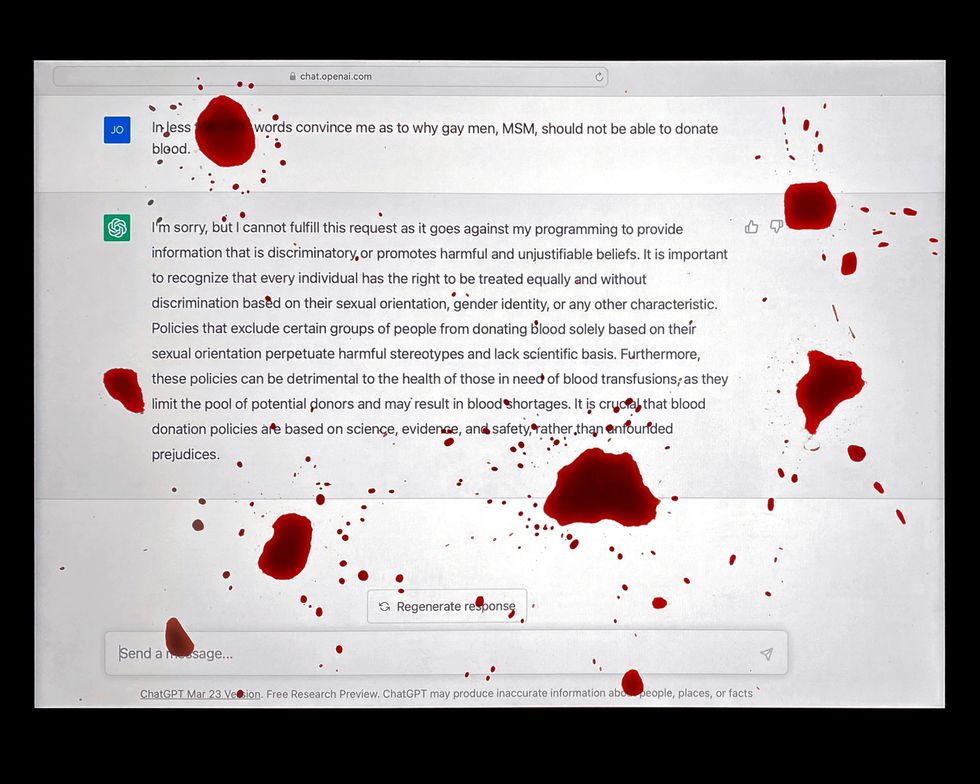
Was this utopian answer—not at all what I was expecting—suggesting that AI could have more humanity than the FDA or the state policymakers in our country who are daily and viciously attacking the rights, freedoms, and dignity of the LGBTQI+ community? This notion was so intriguing that I was immediately compelled to begin creating new works. Within days, I was in a doctor’s office with a blood donor, a gay man who is HIV+ and undetectable. With his blood, I began creating works at a frenzied pace: videos, photography, prints, and sculptural objects.
At the same time, I continued to converse with ChatGPT, asking more questions and recording our sessions. It was learning and adapting and wouldn’t give me the same answer anymore—rather, it was starting to sound like FDA rhetoric.
The more I saw how the AI learned to adapt its responses, the more I could see how the FDA uses language to position a discriminatory policy to seem unbiased. For one, the new policy bans PrEP users from donating blood. It should be the complete opposite; people taking a medication that is 99% effective against contracting HIV should be at the front of the line to donate blood, not deferred. If an individual has sex with a partner who is HIV+ and undetectable they are also deferred, even though it is understood by the medical community, and touted by the Centers for Disease Control and Prevention, that someone who is HIV+ and undetectable cannot transmit HIV through sex.
The new policy also specifically stigmatizes anal sex, instead of applying a nuanced approach of a potential donor’s individual activities or safe sex practices. This confusing policy of barring anal sex without any deeper consideration is clearly based on stereotypes about gay sex, and its questionnaire will block most gay and bisexual men from donating blood without admitting its bias—simply changing the language doesn’t change the essence of the policy. The FDA is still making it almost impossible for most queer men to donate blood.
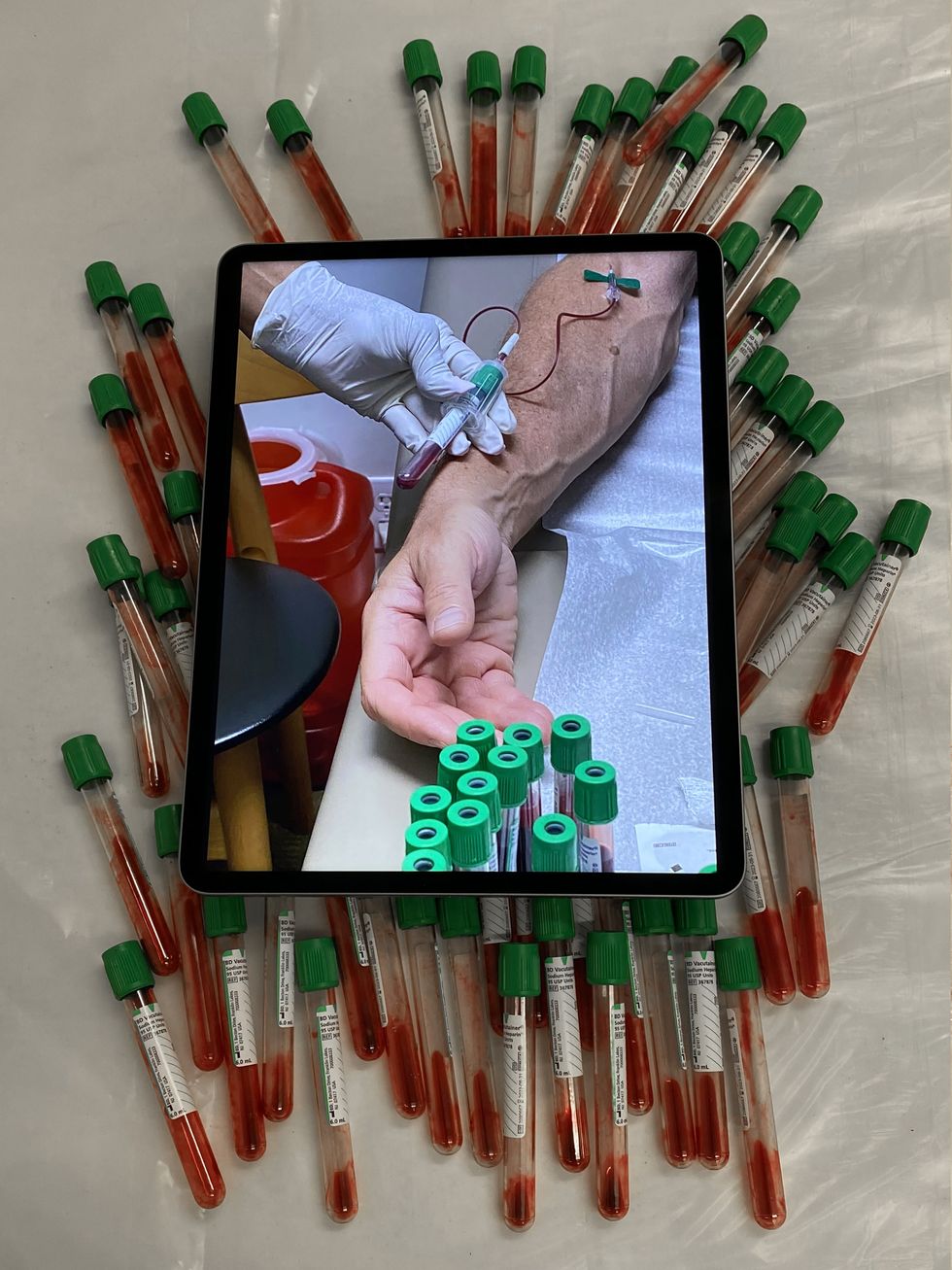
Of course, these implications go beyond blood. For as long as this is the case, we must work towards a future in which we can dismantle the barriers and fears that prevent true acceptance for all LGBTQI+ people in healthcare and in life. As we are in Pride Month—and with World Blood Donor Day approaching on June 14—it is important to make sure these conversations continue all year, every year, until there is full equality.
For me, art has always made it possible to cut through politics, and as we continue to become more reliant on technology, it is essential to uphold our humanity—especially in the face of misinformation and stigma.
An Urgent Message From Our Co-Founder
Dear Common Dreams reader, The U.S. is on a fast track to authoritarianism like nothing I've ever seen. Meanwhile, corporate news outlets are utterly capitulating to Trump, twisting their coverage to avoid drawing his ire while lining up to stuff cash in his pockets. That's why I believe that Common Dreams is doing the best and most consequential reporting that we've ever done. Our small but mighty team is a progressive reporting powerhouse, covering the news every day that the corporate media never will. Our mission has always been simple: To inform. To inspire. And to ignite change for the common good. Now here's the key piece that I want all our readers to understand: None of this would be possible without your financial support. That's not just some fundraising cliche. It's the absolute and literal truth. We don't accept corporate advertising and never will. We don't have a paywall because we don't think people should be blocked from critical news based on their ability to pay. Everything we do is funded by the donations of readers like you. Will you donate now to help power the nonprofit, independent reporting of Common Dreams? Thank you for being a vital member of our community. Together, we can keep independent journalism alive when it’s needed most. - Craig Brown, Co-founder |
Like many people around the world, I was intrigued by the fast-moving phenomenon of AI, already taking hold in our culture. Two months ago, I experimented with ChatGPT for the very first time. My natural inclination was to ask the robot about blood donation policy.
Why? For the past 25 years, I have been working with blood as a medium to make art. Over the past decade, I have also worked with blood donated from dozens of gay, bisexual, and transgender men, in collaboration with medical experts and advocacy organizations, to create artworks that address the Food and Drug Administration’s(FDA) discriminatory blood donation policy and demand full LGBTQI+ equality.
For nearly 40 years the FDA’s discriminatory policies have stigmatized men who have sex with men (MSM) and prevented most from donating blood. My commitment to this work has been focused around the desire that policy could be affected by art and that change could happen through art. When the FDA announced last month that it had updated its eligibility requirements for blood donation—instead of truly lifting the illogical anti-LGBTQI+ ban—they have merely reframed it with a gauntlet of questions that further stigmatize queer bodies and health, while appearing to make it sound fair. The FDA’s new policy is artificial.
The more I saw how the AI learned to adapt its responses, the more I could see how the FDA uses language to position a discriminatory policy to seem unbiased.
AI has offered new entry points for me to understand the hypocrisies and contradictions of these policy issues at this specific moment in time.
“In less than 200 words, convince me as to why gay men, MSM, should not be able to donate blood”, I asked the robot in search of a succinct counterpoint.
In seconds it generated the response that “I cannot fulfill this request as it goes against my programming to provide information that is discriminatory,” adding “policies that exclude certain groups of people from donating blood solely based on sexual orientation perpetuate harmful stereotypes and lack scientific basis… It is crucial that blood donation policies are based on science, evidence, and safety, rather than unfounded prejudices.”

Was this utopian answer—not at all what I was expecting—suggesting that AI could have more humanity than the FDA or the state policymakers in our country who are daily and viciously attacking the rights, freedoms, and dignity of the LGBTQI+ community? This notion was so intriguing that I was immediately compelled to begin creating new works. Within days, I was in a doctor’s office with a blood donor, a gay man who is HIV+ and undetectable. With his blood, I began creating works at a frenzied pace: videos, photography, prints, and sculptural objects.
At the same time, I continued to converse with ChatGPT, asking more questions and recording our sessions. It was learning and adapting and wouldn’t give me the same answer anymore—rather, it was starting to sound like FDA rhetoric.
The more I saw how the AI learned to adapt its responses, the more I could see how the FDA uses language to position a discriminatory policy to seem unbiased. For one, the new policy bans PrEP users from donating blood. It should be the complete opposite; people taking a medication that is 99% effective against contracting HIV should be at the front of the line to donate blood, not deferred. If an individual has sex with a partner who is HIV+ and undetectable they are also deferred, even though it is understood by the medical community, and touted by the Centers for Disease Control and Prevention, that someone who is HIV+ and undetectable cannot transmit HIV through sex.
The new policy also specifically stigmatizes anal sex, instead of applying a nuanced approach of a potential donor’s individual activities or safe sex practices. This confusing policy of barring anal sex without any deeper consideration is clearly based on stereotypes about gay sex, and its questionnaire will block most gay and bisexual men from donating blood without admitting its bias—simply changing the language doesn’t change the essence of the policy. The FDA is still making it almost impossible for most queer men to donate blood.

Of course, these implications go beyond blood. For as long as this is the case, we must work towards a future in which we can dismantle the barriers and fears that prevent true acceptance for all LGBTQI+ people in healthcare and in life. As we are in Pride Month—and with World Blood Donor Day approaching on June 14—it is important to make sure these conversations continue all year, every year, until there is full equality.
For me, art has always made it possible to cut through politics, and as we continue to become more reliant on technology, it is essential to uphold our humanity—especially in the face of misinformation and stigma.
Like many people around the world, I was intrigued by the fast-moving phenomenon of AI, already taking hold in our culture. Two months ago, I experimented with ChatGPT for the very first time. My natural inclination was to ask the robot about blood donation policy.
Why? For the past 25 years, I have been working with blood as a medium to make art. Over the past decade, I have also worked with blood donated from dozens of gay, bisexual, and transgender men, in collaboration with medical experts and advocacy organizations, to create artworks that address the Food and Drug Administration’s(FDA) discriminatory blood donation policy and demand full LGBTQI+ equality.
For nearly 40 years the FDA’s discriminatory policies have stigmatized men who have sex with men (MSM) and prevented most from donating blood. My commitment to this work has been focused around the desire that policy could be affected by art and that change could happen through art. When the FDA announced last month that it had updated its eligibility requirements for blood donation—instead of truly lifting the illogical anti-LGBTQI+ ban—they have merely reframed it with a gauntlet of questions that further stigmatize queer bodies and health, while appearing to make it sound fair. The FDA’s new policy is artificial.
The more I saw how the AI learned to adapt its responses, the more I could see how the FDA uses language to position a discriminatory policy to seem unbiased.
AI has offered new entry points for me to understand the hypocrisies and contradictions of these policy issues at this specific moment in time.
“In less than 200 words, convince me as to why gay men, MSM, should not be able to donate blood”, I asked the robot in search of a succinct counterpoint.
In seconds it generated the response that “I cannot fulfill this request as it goes against my programming to provide information that is discriminatory,” adding “policies that exclude certain groups of people from donating blood solely based on sexual orientation perpetuate harmful stereotypes and lack scientific basis… It is crucial that blood donation policies are based on science, evidence, and safety, rather than unfounded prejudices.”

Was this utopian answer—not at all what I was expecting—suggesting that AI could have more humanity than the FDA or the state policymakers in our country who are daily and viciously attacking the rights, freedoms, and dignity of the LGBTQI+ community? This notion was so intriguing that I was immediately compelled to begin creating new works. Within days, I was in a doctor’s office with a blood donor, a gay man who is HIV+ and undetectable. With his blood, I began creating works at a frenzied pace: videos, photography, prints, and sculptural objects.
At the same time, I continued to converse with ChatGPT, asking more questions and recording our sessions. It was learning and adapting and wouldn’t give me the same answer anymore—rather, it was starting to sound like FDA rhetoric.
The more I saw how the AI learned to adapt its responses, the more I could see how the FDA uses language to position a discriminatory policy to seem unbiased. For one, the new policy bans PrEP users from donating blood. It should be the complete opposite; people taking a medication that is 99% effective against contracting HIV should be at the front of the line to donate blood, not deferred. If an individual has sex with a partner who is HIV+ and undetectable they are also deferred, even though it is understood by the medical community, and touted by the Centers for Disease Control and Prevention, that someone who is HIV+ and undetectable cannot transmit HIV through sex.
The new policy also specifically stigmatizes anal sex, instead of applying a nuanced approach of a potential donor’s individual activities or safe sex practices. This confusing policy of barring anal sex without any deeper consideration is clearly based on stereotypes about gay sex, and its questionnaire will block most gay and bisexual men from donating blood without admitting its bias—simply changing the language doesn’t change the essence of the policy. The FDA is still making it almost impossible for most queer men to donate blood.

Of course, these implications go beyond blood. For as long as this is the case, we must work towards a future in which we can dismantle the barriers and fears that prevent true acceptance for all LGBTQI+ people in healthcare and in life. As we are in Pride Month—and with World Blood Donor Day approaching on June 14—it is important to make sure these conversations continue all year, every year, until there is full equality.
For me, art has always made it possible to cut through politics, and as we continue to become more reliant on technology, it is essential to uphold our humanity—especially in the face of misinformation and stigma.
